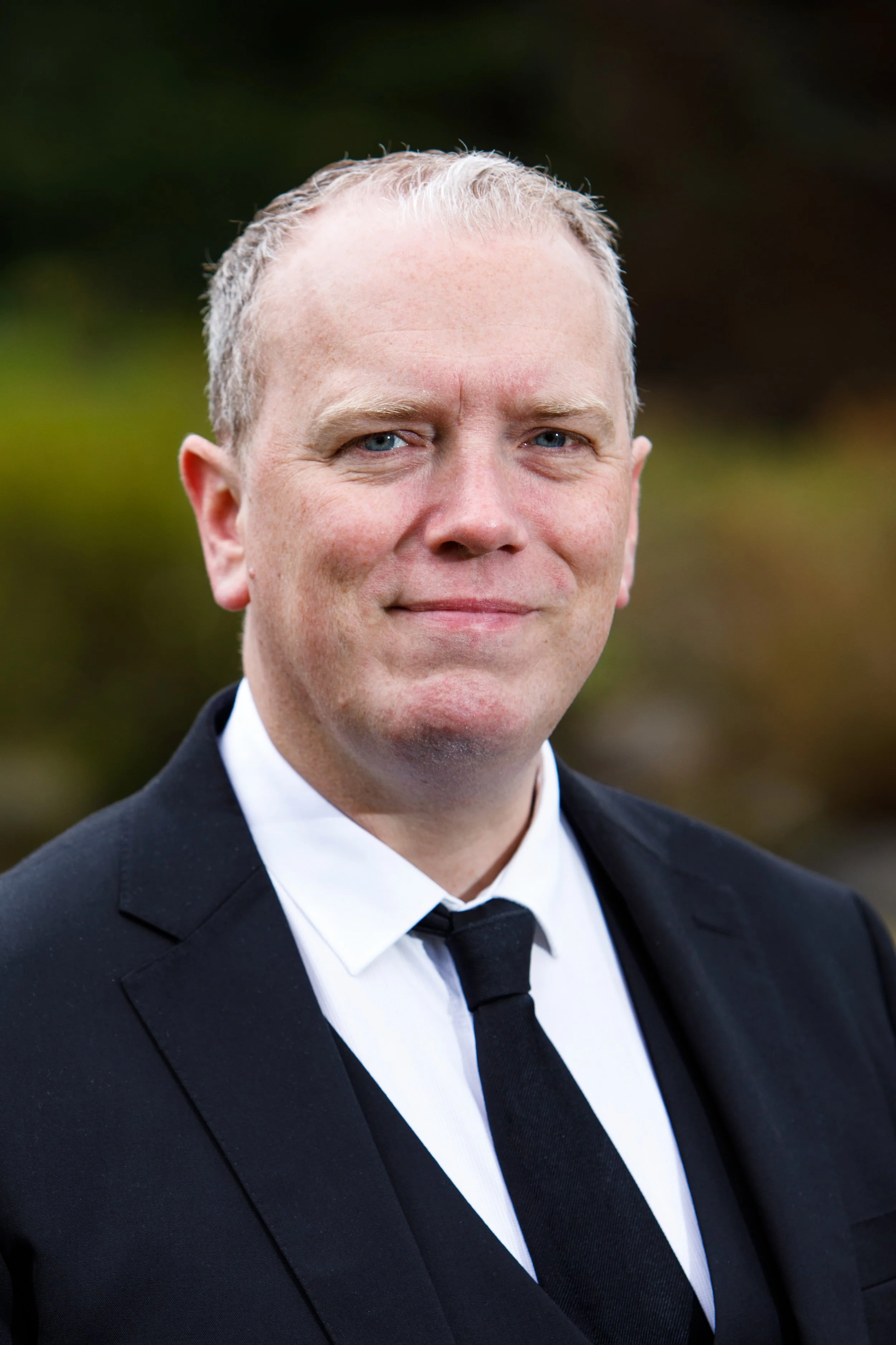We sat down with Icelandic composer, Magnús Ragnarsson, to ask him more about his composing style, inspirations, and what moved him to compose “Messa.”
When did you start composing? How would you describe your composition style?
I composed my first piece for a choir in 2005. I had just finished my studies as a church musician in the University of Gothenburg in Sweden. Although I had learned a great deal in music theory, arrangements and compositions I never imagined that I would become a composer. My main passion was conducting choirs. I had sung in a lot of choirs and made mental notes when I came across an interesting phrase in the sheet music.
There was a beautiful bassline for two bars in a piece by Francis Poulenc, interesting form in a piece by finnish composer Einojuhana Rautavaara, and, when I conducted a work for string orchestra by Puccini, I was impressed by how he revisited an enchanting melody by having the first violins and cellos play it in octaves while second violins and violas played the harmony.
When I was expecting my first child I got inspired to compose a piece and dedicate it to him. I used some of these methods I had compiled from all of these composers, making sure not to steal or borrow any melody or a motif. My son, Ísak, was born at the end of november and the work had its premier a year later when we had moved back to Iceland. I find it hard to describe my style. I just know that I am not theoretical, I rather compose by feeling. I test things out in my head, on the piano or with my choirs.
What influences your composition style (genres, instruments, composers, etc.)?
To begin with I was inspired by all these great composers like Poulenc, Rachmaninov, Schnittke, Stravinsky, Rheinberger, Rautavaara, Mäntyjärvi, Icelandic composers and of course Bach. As a conductor you are always analysing the pieces you are working with and if I would copy something it would mainly be the form or the chord progression. Sometimes I get influenced when I go to the theater, see a movie or by something that happens spontaneously in a choir rehearsal.
How do you choose texts for your pieces?
Usually an idea pops into my head and I carry it around for months or even years. Then I have a general feeling of the music and then I have to find a text that fits the atmosphere and the rhythm of the music. That can take a while. I go through a lot of poems and sometimes I find a text in the Bible. I usually prefer a text that does not have a metrical structure. Once I have decided on the text the words take over as the main inspiration for the music. In recent years I have gone to poets and asked them for something they have written earlier.
What do you enjoy most about composing for voices?
I play the piano and the organ but the choir is the instrument I am most familiar with as a composer. I know the limitations of the voices, especially in my choirs, and I can hear in my head how it is going to sound. And the greatest luxury of all is that I can bring my music to choir rehearsals and have the choir sing it, even if it is not completely finished. I can try out different ideas and see immediately if it works or not. Sometimes this can give the singers the feeling that they took part in creating the piece.
Tell about your work, “Messa.” Is it similar to other works/pieces you’ve composed?
This is my biggest work to date. I got the idea when I was watching a movie with my children. I wanted the upper voices to start with a rhythmical ostinato and then have the basses enter after approximately twenty bars with a three notes theme. I had carried this idea for many years and then when the COVID epidemic hit I finally had time to do something with this.
I spent a lot of time searching for a text that could fit this rhythmical choir piece. I did not intend this to be a religious work. I needed to find a three syllable word that the basses could repeat. I was literally walking up a mountain near Reykjavík with my family in April 2020 when the word struck me: HOSANNA. When I came back down from the mountain I had fitted the Sanctus text from the Latin mass to my musical ideas. A few weeks later I had one of my choirs sing the “Sanctus” in a rehearsal. Because of COVID we had to wait for a year until we could perform it. After the concert many of the singers encouraged me to write the other parts from the latin mass.
I had not written a new piece for some years but I had done some choir arrangements and that had helped me a great deal as a composer. So during the summer of 2021 I wrote the other four parts of the Mass. Even though the “Sanctus” was a catchy piece I decided to have the other movements in different styles. The first movement, “Kyrie,” is a serious prayer and the most Icelandic of them all. “Gloria” is the most joyous one and rather rhythmic. “Credo” has the most text and the form is quite free. It starts as a Gregorian chant, gets very dramatic, then romantic and ends in a jazzy way. “Agnus Dei” was the most difficult one to compose. Even though it seems simple I wanted it to be peaceful and beautiful and that is very challenging to write.
-------------------------------------------------
Hear Magnús’ work, “Messa,” Saturday, January 27th @ 7pm and Sunday, January 28th @ 4pm at First Trinity Lutheran Church. Tickets available below!
